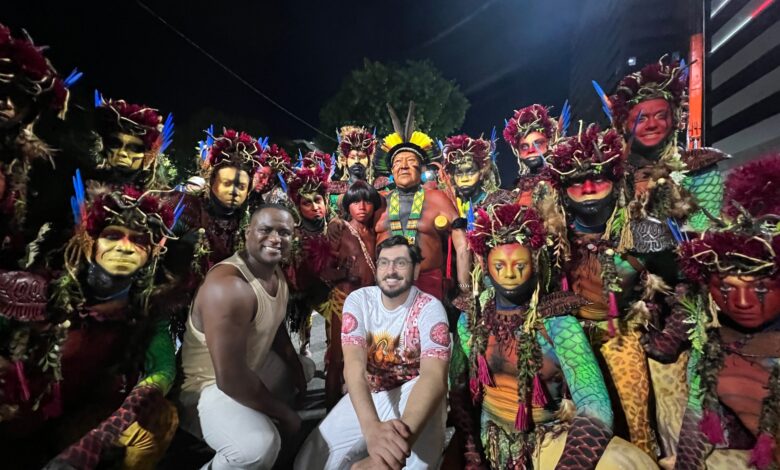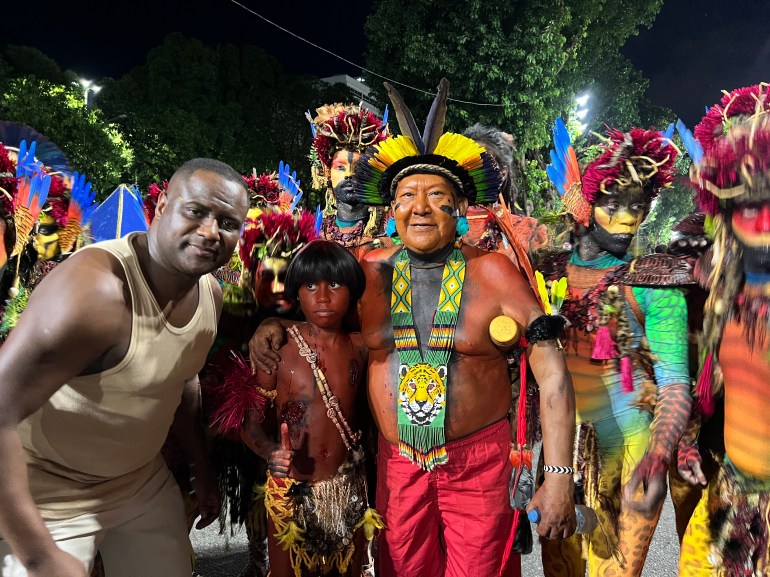At Rio’s Carnival parades, Yanomami activists fight ‘genocide’ with samba

Rio de Janeiro, Brazil – Yellow and green feathers radiating from his headdress, Davi Kopenawa strode onto the parade route with a mission in mind.
All around him, the city of Rio de Janeiro was pulsing with music and merry-making: It was February 12, and the world’s largest Carnival celebration was under way. But Kopenawa was not in town to party.
Rather, he had travelled more than 3,500 kilometres (2,000 miles) from his village in Brazil’s Amazon rainforest to spread a dire message: His people, the Yanomami, were in trouble.
For decades, the Indigenous Yanomami have suffered at the hands of illegal gold miners, who destroyed vast stretches of their homeland and polluted their rivers with mercury.
But since 2019, the crisis has reached new heights, with hundreds of Yanomami dying from conditions related to the mining. President Luiz Inacio Lula da Silva has gone so far as to declare the situation a “genocide”.
“Every day, we face death in our villages and attacks from illegal miners,” Kopenawa, a shaman, told Al Jazeera.

So this year, Kopenawa and other Indigenous leaders took an unusual step. They teamed up with Salgueiro, one of Rio’s celebrated samba schools, to stage an awareness campaign, right in the middle of the annual Carnival festivities.
The result was unveiled in the early hours of Monday at Sambadrome, one of the premier destinations for Carnival parades.
Floats dedicated to the “people of the forest” sailed down the Sambadrome’s wide parade avenue, surrounded by stands packed with thousands of spectators.
Some of the floats featured larger-than-life depictions of Indigenous peoples, arms outstretched as if to soar above the pavement. One float, however, represented the death and destruction wrought by the miners, with feathered headdresses crowning skulls.



